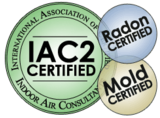Comparing Swamp Coolers, Air Conditioners, and Other Cooling Systems
As summer temperatures soar, finding an efficient and cost-effective cooling solution becomes essential. Whether you’re considering a swamp cooler, a traditional air conditioner, or another cooling system, understanding their efficiencies can help you make an informed decision. We are going to
compare the cooling efficiencies of various systems to help you stay cool without breaking the bank.
Understanding Cooling Efficiency
Cooling efficiency is typically measured by two main metrics:
- Energy Efficiency Ratio (EER): The ratio of cooling output (in BTUs) to the power input (in watts). A higher EER indicates a more efficient system.
- Seasonal Energy Efficiency Ratio (SEER): Similar to EER but measures efficiency over an entire cooling season. A higher SEER rating means better seasonal efficiency.
Swamp Coolers (Evaporative Coolers)
Swamp coolers, also known as evaporative coolers, use the natural process of evaporation to cool the air. They are particularly effective in dry climates.
How They Work:
- Air is drawn through water-saturated pads.
- The air is cooled by the evaporation of water.
- The cooled air is then circulated throughout the space.
Efficiency:
- EER/SEER Ratings: Swamp coolers generally have a lower EER and SEER compared to air conditioners because they use less electricity.
- Energy Use: They consume significantly less energy, about one-quarter of the energy used by a standard air conditioner.
- Cost: Lower initial cost and lower operating costs make swamp coolers an economical choice in the right climate.
Advantages:
- Lower energy consumption.
- Adds moisture to the air, beneficial in dry climates.
- Environmentally friendly with no refrigerants.
Disadvantages:
- Less effective in humid climates.
- Requires regular maintenance (cleaning and refilling water).
Air Conditioners
Air conditioners are the most common cooling systems, using refrigerants to transfer heat from inside your home to the outside.
How They Work:
- A refrigerant absorbs heat from the indoor air.
- The heat is expelled outdoors through a condenser coil.
- Cooled air is circulated back into space.
Efficiency:
- EER/SEER Ratings: Modern air conditioners typically have higher SEER ratings (13-26), indicating better efficiency.
- Energy Use: Higher energy consumption compared to swamp coolers, but more effective in a variety of climates.
Advantages:
- Effective in both dry and humid climates.
- Provides precise temperature control.
- Can also dehumidify indoor air.
Disadvantages:
- Higher energy consumption.
- Higher initial and operating costs.
- Uses refrigerants that can be harmful to the environment if not handled properly.
Other Cooling Systems
Heat Pumps
Heat pumps provide both heating and cooling by transferring heat in and out of your home.
Efficiency:
- SEER Ratings: Similar to air conditioners, often in the range of 14-20.
- Energy Use: More efficient than traditional air conditioners in moderate climates.
Advantages:
- Dual functionality (heating and cooling).
- Efficient operation in moderate climates.
Disadvantages:
- Less effective in extremely hot or cold climates.
- Higher initial cost.
Ductless Mini-Split Systems
Ductless mini-split systems provide zoned cooling without the need for ductwork.
Efficiency:
- SEER Ratings: Typically range from 16 to 22.
- Energy Use: More efficient than traditional air conditioners due to lack of duct losses.
Advantages:
- Zoned cooling reduces energy waste.
- Flexible installation options.
Disadvantages:
- Higher initial cost compared to window units or portable ACs.
- Requires professional installation.
Ceiling Fans and Portable Coolers
While not primary cooling systems, ceiling fans and portable coolers can enhance the efficiency of your existing cooling setup.
Efficiency:
- Energy Use: Very low energy consumption.
- Cost: Inexpensive and easy to install.
Advantages:
- Can be used in conjunction with other cooling systems.
- Inexpensive way to enhance comfort.
Disadvantages:
- Limited cooling capability on their own.
- Only circulate air rather than lower the temperature significantly.
Choosing the Right System for Your Home
Selecting the right cooling system depends on several factors:
- Climate: Swamp coolers are ideal for dry climates, while air conditioners and heat pumps are more versatile.
- Budget: Consider both initial costs and long-term operating costs.
- Energy Efficiency: Look for high EER and SEER ratings to save on energy bills.
- Maintenance: Factor in the maintenance requirements of each system.
Understanding the efficiencies of different cooling systems can help you make an informed decision that balances comfort, cost, and environmental impact. Whether you opt for a swamp cooler, an air conditioner, or another system, ensuring efficient operation will keep you cool and your energy bills low.


